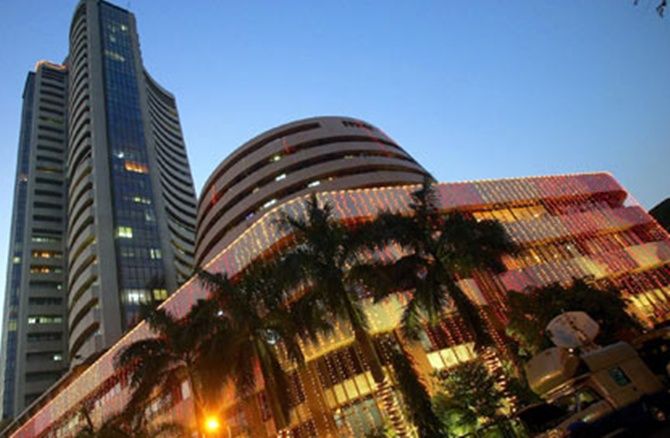 There is a lot of steam still left on Dalal Street. At present, foreign institutional investors (FIIs) own nearly 42 per cent of all free-float (non-promoter) shares of BSE-500 companies - the highest level in 10 years.
There is a lot of steam still left on Dalal Street. At present, foreign institutional investors (FIIs) own nearly 42 per cent of all free-float (non-promoter) shares of BSE-500 companies - the highest level in 10 years.
Current valuations, however, are 10-15 per cent lower than the 23.7 times at the end of the December 2007 quarter (when the Sensex was close to reaching its pre-Lehman highs) and 20 times at the end of the September 2009 quarter (when the post-Lehman rally happened).
The surge in FII purchases in the current rally did not translate into higher valuations because domestic investors, including promoters, were net-sellers until March this year.
In the past five years, there has been a steady decline in promoter holding due to a mix of the government's disinvestment in public-sector companies and fundraising by companies in cash-hungry and capital-intensive sectors like construction, infrastructure, metals, telecom and banking & financial services.
The average promoter holding in BSE-500 companies declined to 51.8 per cent at the end of the September quarter from 55.8 per cent three years ago and the high of 58.6 per cent in March 2009.
Upward pressure on valuation was also lessened by profit booking by domestic institutions (insurance companies and mutual funds) and retail investors. There has been a 500-basis-point decline each in the average holding of domestic institutions and retail investors in the past three years.
"If promoters and domestic investors turn net-buyers or even if they stop selling, the only way FIIs can pick up more shares is by bidding up share prices to higher levels. This could spark a strong rally on Dalal Street and lead to an expansion in price-to-earnings multiples - similar to what had happened in the run-up to the previous market highs," says Dhananjay Sinha, head of institutional equity at Emkay Global Financial Services.
Things have already begun to change on D-Street. Mutual funds turned net-buyers in the September quarter (for the first time in three years) and promoter raised their stake during the quarter (for the first time in last six years). Insurance companies were the only ones that were still booking profits, but that could change as flows into insurance funds improve.
 Some experts say incremental FII inflow might not necessarily lead to a sharp increase in valuations, as large domestic institutions like Life Insurance Corporation (LIC) follow a contra-investment strategy.
Some experts say incremental FII inflow might not necessarily lead to a sharp increase in valuations, as large domestic institutions like Life Insurance Corporation (LIC) follow a contra-investment strategy.
"Domestic insurance companies learnt their lessons from an FII sell-off during the Lehman crisis of 2008. LIC, for example, now mostly buys when markets fall in the wake of FII sell-offs and book profits when FIIs turn bullish. This provides a cushion to the market in either direction," says G Chokkalingam, founder & chief executive, Equinomics Research & Advisory. LIC is the single largest investor on Dalal Street.
Things could, however, change if domestic retail investors and high-networth investors (HNIs) turn bullish on stocks. "Retail participation would then add fuel to fire, like we saw in late 2007, when the valuation touched an all-time high," adds Sinha.
 At present, the BSE-500 index is trading at around 18.3 times its trailing 12-month earnings - much below the previous high of 20-plus price-to-earnings, when FII exposure had peaked in late 2007 and in 2010. The price-to-earnings moderates to around 17.1 times if we consider stock prices at the end of September this year and the September-quarter earnings of companies that have declared their results so far.
At present, the BSE-500 index is trading at around 18.3 times its trailing 12-month earnings - much below the previous high of 20-plus price-to-earnings, when FII exposure had peaked in late 2007 and in 2010. The price-to-earnings moderates to around 17.1 times if we consider stock prices at the end of September this year and the September-quarter earnings of companies that have declared their results so far.
The analysis is based on the quarterly net profit, market capitalisation and shareholding pattern of BSE-500 companies beginning the March 2004 quarter.
It includes companies that listed on the bourses in the intervening period. For companies that listed later, data were taken from the period when their annualised (trailing 12-month) profits were publicly available. The sample included 497 companies, of which 170 companies came out with IPOs and listed during the period.












 © 2025
© 2025